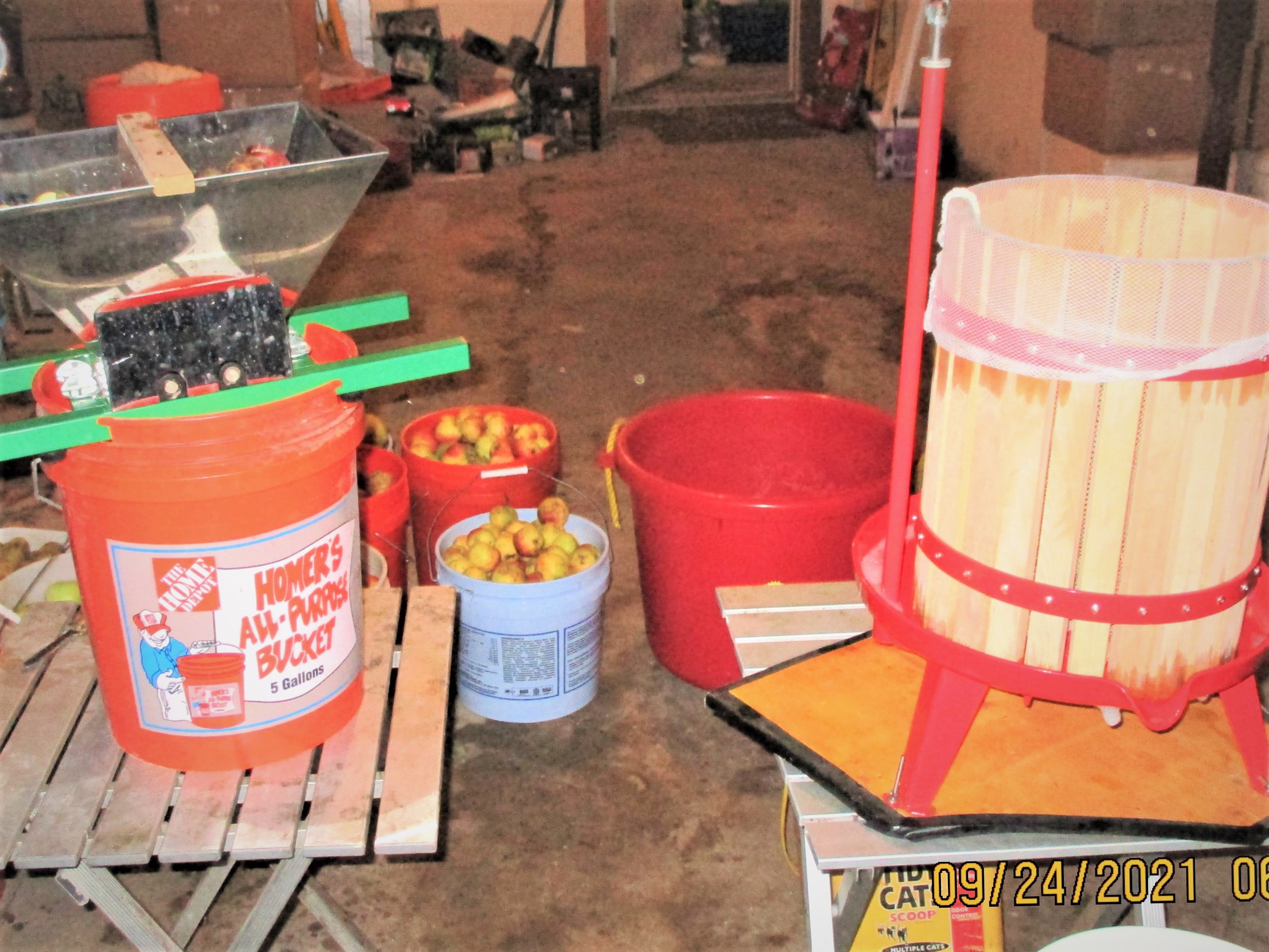Welcome to HBT!
I always sweat the apples for at least a month before pressing. However, its still early in the apple season, and generally speaking, early season apples don't store very well. Apples are loosely categorized as early, mid and late season. I've noticed my best cider comes from late season apples, but you have to use what you have. Look at the apples every 3-4 days and toss out any that are going bad, one rotten apple will make others spoil as well. If you can put a dent in an apple with your thumb, they're ready for cider making. You need a cool place to store them.
You can get free apples by asking neighbors with trees in their yards that would like the help of cleaning them up and I've seen free/cheap apples on FB marketplace. Check with local growers for "seconds" which are either too big, too small or appearance problem apples. Around here the going price is $8/bushel for seconds, which is pretty cheap. Sometimes the seconds are not ripe, which are not really that great for cider, but again, you have to use what you can get.
Cider will usually ferment all the way to dryness so sweating the apples may improve the flavor, but its not going to change the sweetness of the fermented cider. If all you can get are eating apples, try to get more varieties in the mix, but don't put more than 10-15% acidic or really tart apples in.
S-04 English Ale yeast leaves a small amount of sweetness compared to wine yeast which will go completely dry.
I usually use Cider House Select yeast which makes a nice dry cider and then back sweeten to taste with frozen apple juice concentrate, but you can use honey, plain sugar, or something like stevia to back sweeten the cider. Note that fermentable sugar will get the fermentation going again, so I only back sweeten one 1.5 L bottle at a time, keep it in the fridge and drink it within a week or so. Lately I've been lazy and have been using Angry Orchard cider to backsweeten "in the glass". About 2 oz Angry Orchard (which is pretty sweet to my taste) in 12 oz home made dry cider over ice is a pretty nice drink for me.






























![Craft A Brew - Safale BE-256 Yeast - Fermentis - Belgian Ale Dry Yeast - For Belgian & Strong Ales - Ingredients for Home Brewing - Beer Making Supplies - [3 Pack]](https://m.media-amazon.com/images/I/51bcKEwQmWL._SL500_.jpg)





























